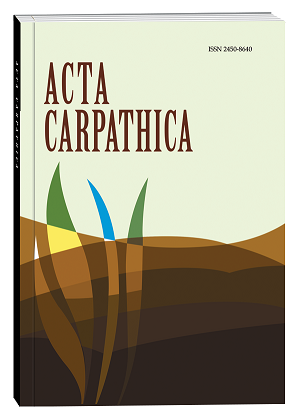EFFECT OF VITAMIN D3 ON HEMATOLOGIC INDICES AND RESISTANCE OF LAYING HENS
DOI:
https://doi.org/10.32782/2450-8640.2023.1.5Keywords:
Laying hens, vitamin D3, 25-OH D3, red blood cells, hemoglobin, white blood cells contain, innate imunityAbstract
The content of vitamin D3 in standard fodder for laying hens varies within 2,5-3,500 IU / kg. It is known that vitamin D is involved in bone metabolism and regulates calcium homeostasis in the body. Experiment was carried out in three groups of laying hens of the crossbreed Hayesks brown, which for 30 days fed fodder, the content of vitamin D3 in which was respectively 2,5; 5,0 and 10,0 thousand IU / kg. An increase in the content of vitamin D3 from 2.5 to 10.0 thousand IU / kg increased the concentration of 25-OH D3 in blood plasma by half (from 15.10 to 27.25 ng / ml). The dose of 5.0 ths. IU / kg did not affect the concentration of 25-OH D3 (16.56 ng / ml). Increased vitamin D in the diet increased the number of red blood cell and, consequently, hemoglobin concentration in the blood (p <0.05) and decreased the number of white blood cell (p <0.05-0.01). In the blood of chickens that received high levels of vitamin D in the diet, more monocytes and neutrophils were detected. Particularly significant effects were observed for monocytes, the proportion of which in the blood of laying hens in group 2 increased by 1.2; and in laying hens of the third group - 1.6 times (p <0.01), compared to the laying hens of the 1st group. With an increase in the amount of vitamin D3 in the diet of leucocytes, the proportion of lymphocytes decreased, the content of which in laying hens of 1-, 2- and 3rd groups was 58.95, respectively; 54.57 and 48.26%. Under the influence of feeding 10.0 thousand IU / kg of vitamin D3 in the blood of hens, the phagocytic activity increased (p <0.05), which is consistent with the increase in the number of monocytes and neutrophils. The bactericidal activity of blood serum of laying hens of groups 2 and 3 (5.0 and 10.0 ths. IU / kg D3) was 20% higher (p <0.05) than in laying hens of group 1 (2, 5 thousand IU / kg D3). Thus, an increase in the diet of laying hens in vitamin D3 increases the innate imunity and does not stimulate a specific link.
References
Ceglia L.Vitamin D and its role in skeletal muscle. Curr. Opin. Clin. Nutr. Metab. Care, 2009, vol. 12(6), pp. 628–633.
Bikle D. D. Vitamin D and bone Curr Osteoporos Rep. 2012; 10(2), рр. 151–159.
Kamen D. L., Tangpricha V. Vitamin D and molecular actions on the immune system: modulation of innate and autoimmunity. J. Mol. Med. (Berl), 2010, vol. 88(5), pp. 441–450.
Aranow C. Vitamin D and the Immune System. J. Investig. Med., 2011, vol. 59(6), pp. 881–886.
Prietl B., Treiber G., Pieber T. R., Amrein K. Vitamin D and immune function. Nutrients, 2013, no 5, pp. 2502–2521.
Adams J. S., Hewison M. Update in vitamin D. J. Clin. Endocrinol. Metab., 2010, vol. 95, pp. 471–478.
Holick M. F. Vitamin D deficiency. N. Engl. J. Med., 2007, vol. 357, pp. 266–281.
Battault S., Whiting S. J., Peltier S. L., Sadrin S., Gerber G., Maixent J. M. Vitamin D metabolism, functions and needs: From science to health claims. Eur. J. Nutr., 2013, vol. 52, pp. 429–441.
Hewison M. An update on vitamin D and human immunity. Clin. Endocrinol, 2012, vol. 76, pp. 315–325.
Baeke F., Takiishi T., Korf H., Gysemans C., Mathieu C. Vitamin D: Modulator of the immune system. Curr. Opin. Pharmacol, 2010, vol. 10, pp. 482–496.
White J.H. Vitamin D metabolism and signaling in the immune system. Rev. Endocr. Metab. Disord., 2012, vol. 13, pp. 21–29.
Ferreira G. B., van Etten E., Verstuyf A., Waer M., Overbergh L., Gysemans C., Mathieu C. 1,25-Dihydroxyvitamin D3 alters murine dendritic cell behaviour in vitro and in vivo. Diabetes Metab. Res. Rev., 2011, vol. 27, pp. 933–941.








